基于单片机的智能监护系统设计
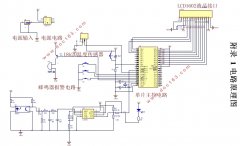
1.无需注册登录,支付后按照提示操作即可获取该资料.
2.资料以网页介绍的为准,下载后不会有水印.资料仅供学习参考之用.
密 惠 保
基于单片机的智能监护系统设计(任务书,开题报告,论文12000字)
摘要
健康问题是人们长期以来最关心最重视的问题。随着现代医疗设备的发展,人们在健康方面有了更多的依靠。但是为了更加方便人们的生活,设计一个方便于家庭生活中使用的智能监护系统是非常必要的。此智能监护系统包含心率测量、体温测量以及报警功能,方便、快捷适合家庭生活中使用。在此智能监护系统设计过程中,我们采用传感器、时钟芯片技术和单片机技术相结合,以STC89C52单片机为核心,通过光电传感器以及数字温度传感器收集心率和体温的信号,利用单片机系统内部定时器来计算时间,再通过对信号的累加得到心跳次数和温度值。本设计中心率的测量是利用光电传感器产生脉冲信号,通过放大整形传输给单片机进行控制得到心率值,体温的测量则是利用数字温度传感器直接将信号传输给单片机进行控制得到数字信号,单片机最终把采集到的心率信号和温度信号通过控制显示在LCD1602上。同时系统还可以设定心率的上限次数和下限次数,当测量的范围超过设定的范围时驱动蜂鸣器就会产生报警提醒。本设计功能齐全、方便快捷、适用于日常生活。
关键词:STC89C52 传感器 LCD1602 定时器
The design of Smart monitoring system based on MCU [资料来源:http://think58.com]
ABSTRACT
Health problems are always concerned by people for the long term. Nowadays, people have more reliance than before for the development of modern medical equipment. But concerning about people’s conveniences, designing a household smart monitoring system is quite necessary.This system is convenient to use in daily life and it consists of heart rate measuring, body temperature measuring and alarm function. We combined the sensor with SCM and clock chip technique in this design.Centered on the STC89C52 SCM, he system collects heart rate and body temperature signals via photoelectric sensor and digital temperature sensor, then uses the internal timer to compute time, and finally gets the heart rate and temperature by accumulating the signals. In this case, measuring of heart rate uses the photoelectric sensor to produce pulse signals and transmit to SCM by amplification while measuring of body temperature uses the digital temperature sensor and directly transmits to SCM for control. In the end, SCM shows the heart rate and body temperature on the LCD 1602.Meanwhile, users can set the upper and lower limits for the heart rate, when the measured value is not included, the buzzer will alarm.This design has complete functions which is so convenient and suitable for daily life.
Keywords: STC89C52 Sensor LCD1602 Timer
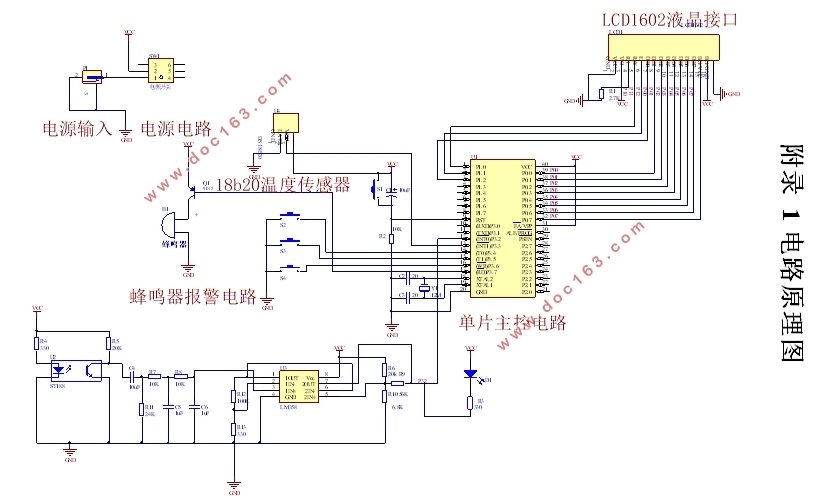
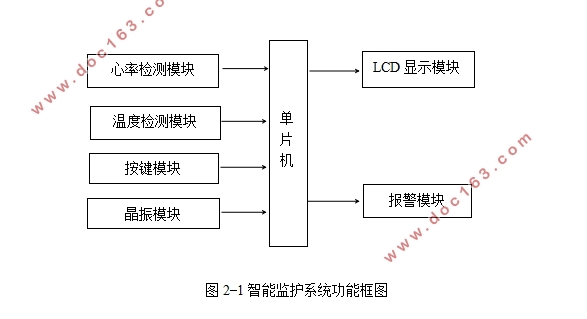
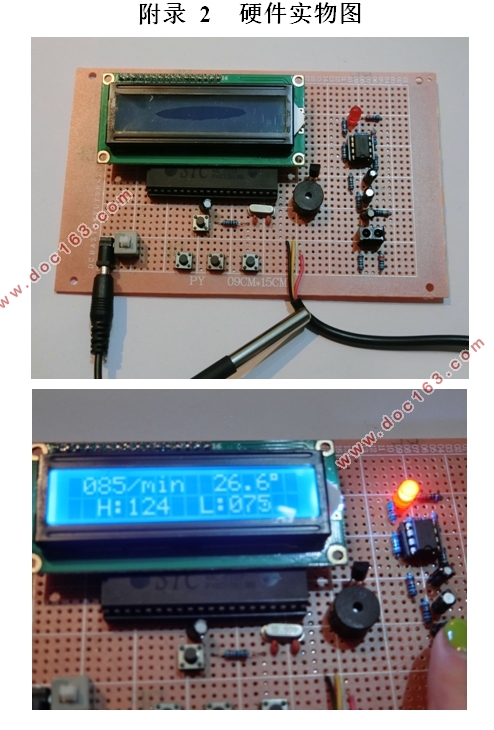
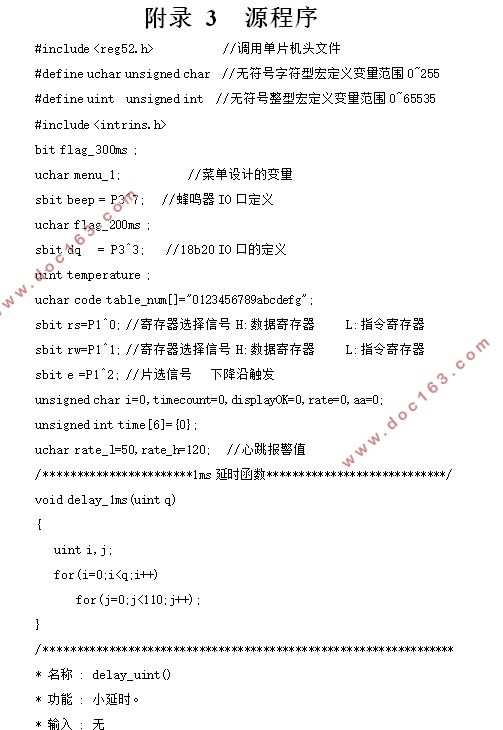
目 录
摘要 I
ABSTRACT II
第一章 绪论 1
[资料来源:THINK58.com]
1.1课题研究的背景和意义 1
1.1.1概述 1
1.1.2发展前景分析 1
1.1.3智能监护系统的发展现状及特点 1
1.2课题研究的主要内容 2
第二章 智能监护系统的主要功能和方案设计 3
2.1主要功能和设计方案 3
2.1.1智能监护系统的主要功能 3
2.1.2智能监护系统的方案设计 3
2.2智能监护系统的整体方案 4
2.2.1智能监护系统的工作原理 4
2.2.2智能监护系统的整体硬件框图 4
2.3器件的选择 5
2.3.1主控芯片的选择 5
2.3.2心率信号采集传感器的选择 6
2.3.3温度信号采集传感器的选择 7
2.3.4 LCD液晶显示屏的选择 7
第三章 智能监护系统的硬件电路设计 9
3.1智能监护系统的硬件电路设计 9
3.1.1主控制模块 9
3.1.2 LCD显示模块 12
3.1.3 心率信号采集模块 13
3.1.4 蜂鸣器模块 17
3.1.5 按键模块 18
第四章 智能监护系统的软件设计 19
4.1软件流程设计 19
4.1.1总体程序流程设计 19
4.1.2按键子模块程序流程设计 20
4.1.3心率测量程序流程设计 20
4.1.4 温度测量程序流程设计 22
4.1.5 LCD显示程序流程设计 22
4.1.6 报警程序流程设计 23
第五章 智能监护系统的硬件调试 24
5.1 硬件系统调试 24
5.1.1调试过程 24
5.1.2调试结果 24
5.1.3本设计存在的问题 25
结 语 26
参考文献 27
致 谢 29
附录 1 电路原理图 30
附录 2 硬件实物图 31
附录 3 源程序 32 [来源:http://think58.com]
